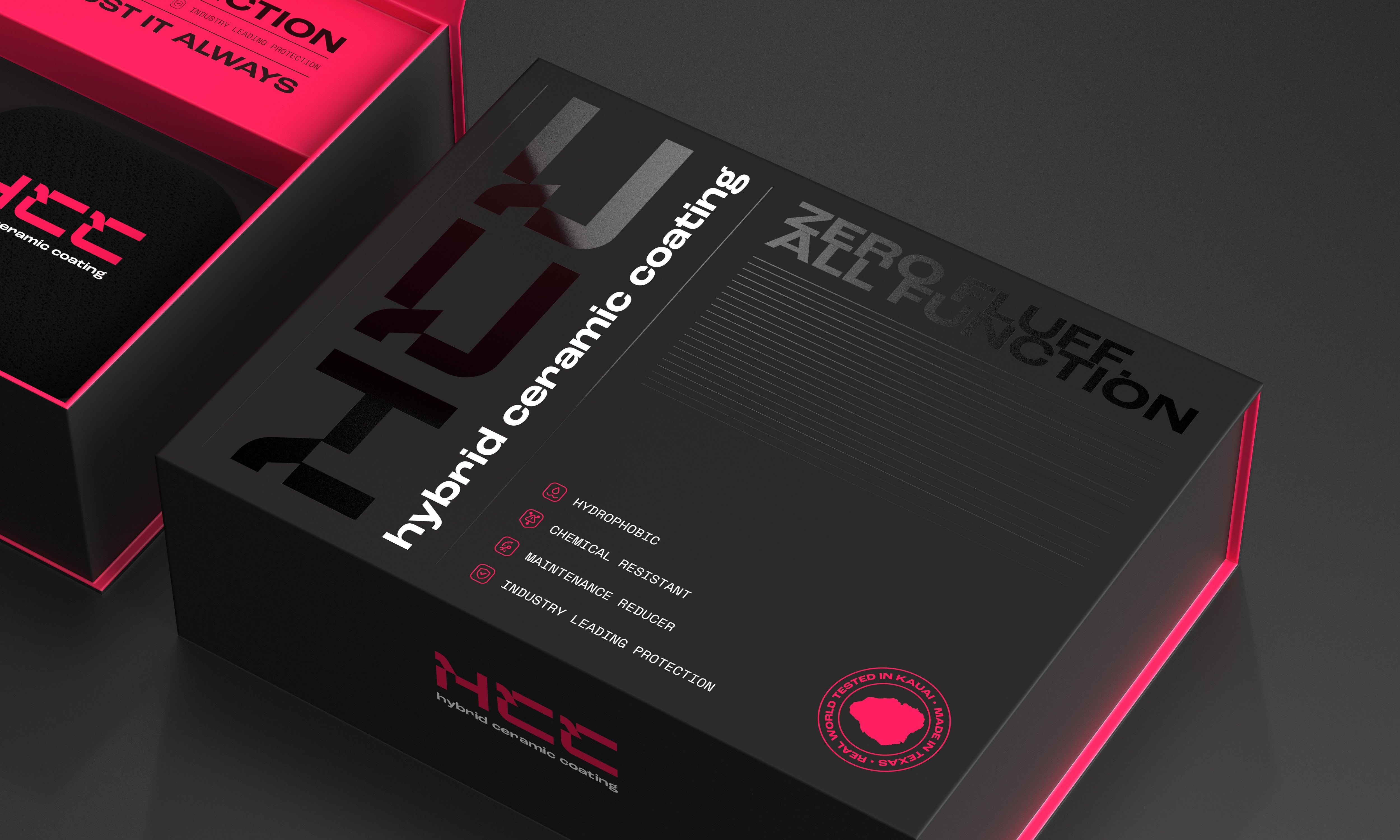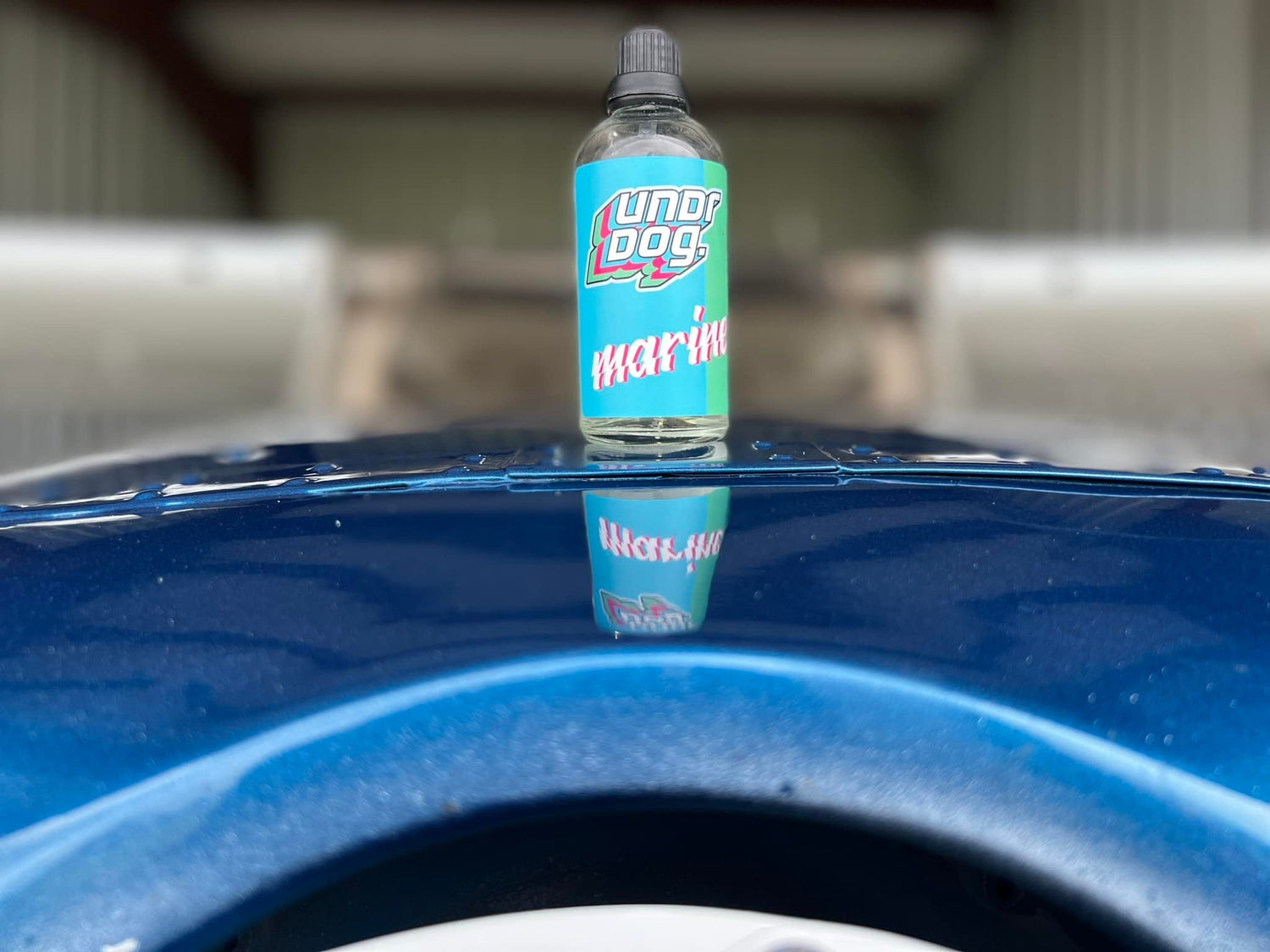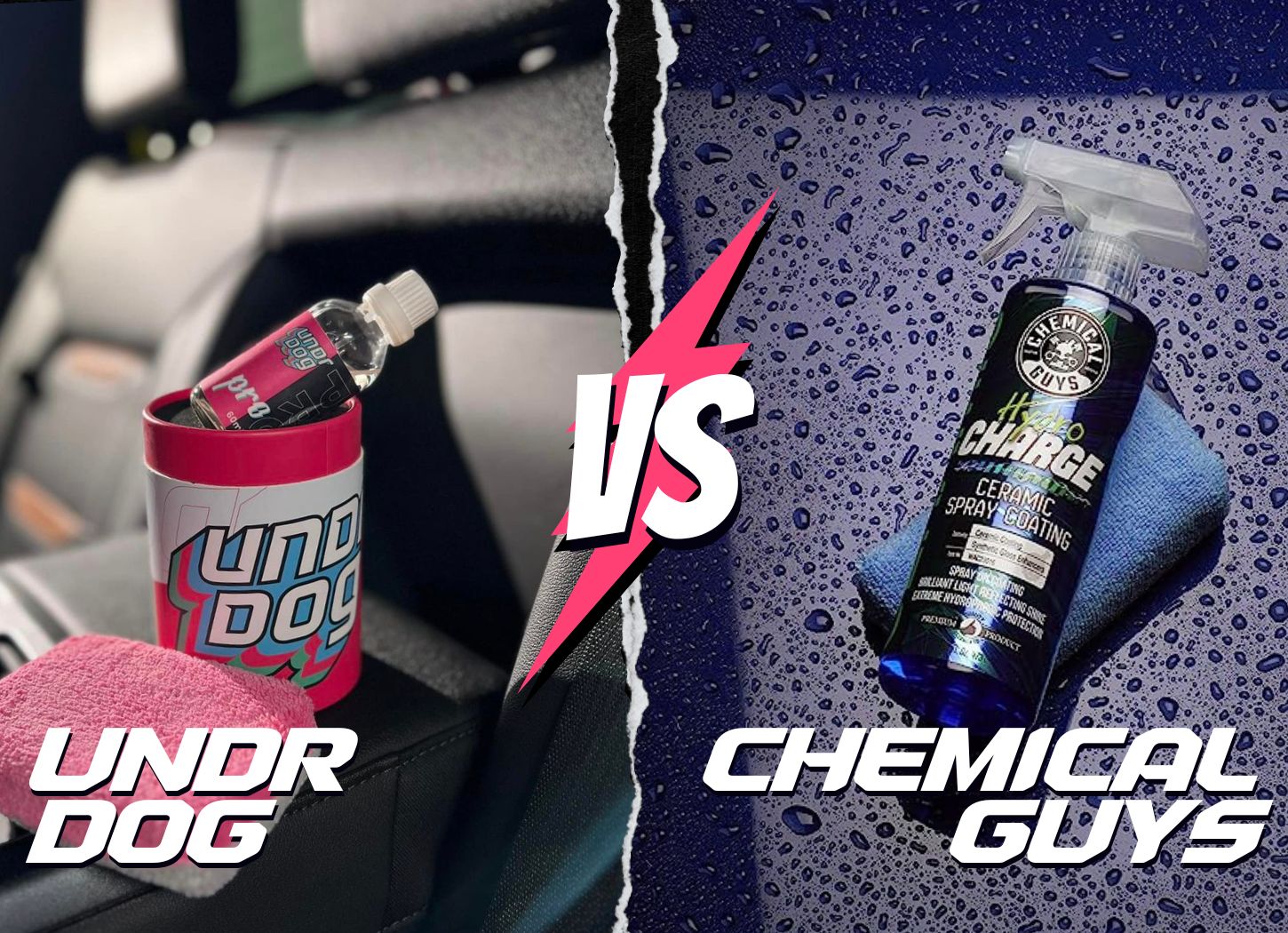Table of Contents
Ahoy there mate! You got yourself a boat, but you’re not really sure how to handle her, huh? Keeping her safe and happy is by no means an easy task. Don’t worry, you docked at the right place. We got you.
Welcome to Boat Detailing 101, where we'll teach you everything you need to know about keeping your vessel in shipshape condition.
Whether you're a seasoned sailor or a newbie just getting your sea legs, this guide will walk you through the process of boat detailing, from the tools you'll need to the techniques you'll use.
So, grab your deck brush, put on your favorite sailor's cap, and let's dive right in.
Why is boat detailing a must?
Boat detailing is not the same as detailing a car.
It’s not a question of luxury or vanity (although in some cases it is). It’s a question of whether she’ll survive the harsh marine environment.
Whether you’re wrapping up the season or taking her out for a ride, your baby’s bound to get wet and dirty (not necessarily in that order).
Keeping her polished, clean, and free of oxidation is not optional. It’s something you have to do to protect your investment.
Boat detailing is about making her look pretty. But it’s also about preserving her value, extending her life, by protecting her and shielding her from the elements and mother Nature’s wrath.

As you know, dirt can damage the gel coat and cause it to break down after a while. On the other hand, the sun’s UV rays penetrate the gel coat and they cause the pores of the gel coat to swell and open up which creates more opportunity for it to become oxidized because it has increased its surface. So we’re up against oxidation, salt, water, UV rays, contaminants of different kinds, and you name it.
They say that the acronym B.O.A.T. stands for “bust out another thousand,” and we’re not here to tell you it isn’t true. It is. But with the right detailing, you’ll be able to minimize the number of thousands that you have to bust out.
So let’s start with an overview of tools for boat detailing that you’ll need to get her in the mood to float.
Equipment that can make or brake your boat detailing
Before we set sail on this boat detailing journey, let's make sure we've got all the necessary equipment & boat cleaning supplies. The chart below contains everything that’ll float your boat…

Handling the exterior

You gotta know how to love your vessel inside and out, or outside and in, depending on where you start your boat cleaning / boat detailing journey. Some pro boat detailers recommend starting from the interior, others say that you should cover up the interior and start from the outside.
What matters is to:
- Use the top-down approach
- Focus on one area at a time
- Rinse as soon as you’ve finished soap and scrubbing
- Wipe everything, air-dry nothing (unless you have a reverse osmosis system)
- Give it some time to dry after you’ve wiped it
- Follow the pre-rinse, wash, soap, scrub, rinse, wipe hierarchy
I know you’re eager to clean her up but wait. Good things come to those who do.
Take her out of the water and cover her up.
The first thing you need to do is wash the cover. You don’t want contaminants to water down your hull from your cover as you wash your boat.
If your boat is trailer-able, take her out of the water and get her on a flat, elevated surface. No need for anything fancy, a trailer will do just fine.
You’re gonna want to keep the interior dry so cover her up and ready the hose.
Pre-rinsing

Pre-rinse her surface thoroughly and try to remove any debris or
loose dirt! One of the most important steps in your boat detailing journey.
The golden rule is to always rinse and/or wash from top to bottom. This ensures that any dirt or grime you wash off doesn't end up on a clean part of your boat.
Once you pre-rinse the boat, fill the buckets with water and add marine detailing soap to it. Make sure you add soap made specifically for boat surfaces.
It’s better I go “captain obvious” than listen to yer “why didn’t you tell me thats.”
Wash & scrub
Use a non-abrasive wash mitt, a long-handled brush with soft bristles, and a marine soap to wash and scrub every inch of your boat. Pay special attention to any areas with stubborn stains or bird droppings (aka bird sh*t).
When you wash your boat with a wash mitt, focus on one area at a time, use circular motions, and rinse them as you go. It’s important that you rinse each area immediately after washing because dried soap can leave stains or even scratch layers of your coating. Remember the top-down approach? Good. It still applies.
When it comes to scrubbing, be gentle with her. Rinse your wash mitt out regularly to keep the debris out. Make sure you don’t scratch the surface or damage the paint. Always remember that it’s not about the scrub, it’s about the soap. The soap does most of the work so make sure you’re using high-quality marine-grade soap that doesn’t require too much force when scrubbing.
Final rinse
Once you’ve washed and scrubbed the boat in its entirety, one area at a time, do a final rinse, only this time drop the nozzle. You want to avoid beading and any water spots so let the water run freely.
Wipe her clean
When you finish washing and scrubbing, be a gentleman and give her a towel. Use towels with microfibers to carefully wipe and dry all the areas. You want to avoid residue from elements in the water so don’t leave your boat to dry on its own.
Once you’re done wiping, make sure to inspect all areas for any imperfections, flaws, scratches, or damage that might need repairing.
How to clean and detail your boat’s interior

Before you begin, remove all the accessories and carpets from the boat so that you can easily access the interior surfaces.
Now, everything you did with the outside of your boat, you’ll do on the inside.
So rinse, wash, wipe ‘n’ chill.
Just a few additional things to note:
Engine and electronics
You can spray most of the boats with a hose since they have drains that are built in. But when it comes to the electronics, you might wanna tone it down a bit. Just like… wipe them and clean the instrument gauges with a wet cloth or Undrdog Quick Detail. That’ll do.
You don’t want to get water on your electronics and cause a short circuit or corrosion so be careful.
For outboard engines, start by washing the cowling regularly with soap and water, treating it like your car's finish. Use gentle microfiber cloths and avoid abrasive brushes if you want to reduce swirls.
When it comes to the engine itself, be cautious. Wipe away dirt and grime and call it a day.
Teak
Regularly cleaning the teak with soapy water is a simple and effective method. Use soft bristles to avoid damaging the wood. Over time, the teak’s bound to darken and appear mottled due to environmental factors.
In such cases, an acid-based teak cleaner is recommended, but make sure to follow the manufacturer's instructions on what you should use.
Special boat interior cleaners can damage the gel coat and the surrounding surfaces so tread carefully if you use ‘em. Before y'all go slappin' them cleaners, make sure you rinse off that teak, just to be on the safe side.
By the way, some detailers like to oil up the teak, but if you have good enough soap, that won’t be necessary.
Seats, cushions, vinyl & rubber
If you were a good boy and cleaned them regularly, a rinse, wipe, or vacuum will suffice. We both know that may not have happened perfectly every time and you probably “forgotten” about them so you’re gonna have to use a little elbow grease.
After washing the seats, wipe them and dry them off.
Carpet
Vacuum the carpet to remove any loose dirt, then use soap and a brush to deep clean it. Make sure to rinse thoroughly and let it dry completely to prevent mildew, mold, and nasty smells.
Metal
Restore the shine of metal fixtures in your interior with the magic of Undrdog WSP.
Aluminum, horns, cleats, chrome railings, handles, ladders, etc. Same drill every time. Wash, soap, scrub, wipe, and dry.
Windows, windshield, screens, glass ‘n’ stuff
Wash, scrub, wipe. Use Undrdog’s Window Warsh for crystal clear glass surfaces. Simple as that.
Which contaminants are you up against when detailing your boat?

Bird droppings
Bird poop can cause staining which basically depends on the kind of bird and its diet. Especially seagulls and pelicans are known to eat nasty things and sh*t bricks. Sometimes they sh*t blood too. It looks (and smells) worse than it is though. Just scrub it off with soap and water. A deck brush is best to get the nasty stuff off. If it ends up being stained, you can use our WSP to help get it off.
But ideally, it’s gonna be soap and water. If that doesn’t work, go with vinegar or hydrogen peroxide. Bleach is the last ditch effort, and that applies to detailing your boat in general.
Bee droppings
Bee poop comes in the form of little orange spots or yellow dots that leave stains on non-coated boats. Luckily these nasty buggers are easy to get off with stain removers.
Spider poop
Spider sh*t usually hits freshwater boats: You rarely see spider issues out in the ocean since they like to inhabit freshwater marinas, dock lines, boat covers, or your bimini. They just sit there and sh*t all over everything on the boat. Seats, plastic, gel-coat and you name it.
If you don’t take care of spider poop in due time, it's gonna leave a stain. Those stains may require you to use heavy-duty chemicals to get them out which is not good for the environment, not good for the boat nor is it good for your pocket.
You’ll recognize spider poop as black blue or green little dots.
A lot of things can help you deal with bug sh*t. You can spray insecticide around the dock and your boat, but it’s not really good for the water. Take your dock lines and soak em with something that kills spiders or just clean them every day.
Algae
Algae growth is inevitable whether it's fresh or salt water. When algae get attached to your hull, they create a drag and slow down the speed of the boat.
To make things even worse, they create unsightly stains that can accumulate to become hours and hours worth of work that requires heavy-duty assets to remove.
Conventional ways to remove it are to use on-off or muriatic acid. Do know that all of the solutions that are acidic in nature and designed to kill the algae, remove the stains and make it easier to clean, come with a cost. They’re dangerous to the skin and emit strong vapors.
Some boats are trailered and others live in the water full-time. The latter has divers that clean the bottoms of the boat on a regular basis (bi-weekly or monthly).
Trailer boats don't sit in the water as long usually so they don't accumulate the same amount of algae boats.
Some of the water will stain your boat just from a day of being in the water in which case you will have to use a heavy-duty wash chemical and some water to remove it.
Tainine staining
Unlike algae which are green, tannin staining (which gets released from the algae) is brownish. It especially shows on light-colored boats, but it will affect all of them. Without protection, tannin staining can penetrate the gel coat and cause additional problems down the line.
To get rid of it, you can scrub it, or use the same chemicals that you use for algae removal.
Mold and mildew
Mold and mildew like to grow where it's moist and damp. If your boat is stored with a cover over it for too long or if it’s sitting out in the harbor for too long, it’s bound to contract mold. Mold and mildew usually collect in seat compartments, under seats, or on upholstery.
Sometimes the mold sits on decks because the morning dew collects on the boats so the mold grows and degrades vinyl and gel coat.
If the mold is fresh it will just wash off, but if it had time to colonize the surface, you’re gonna have to use a magic eraser, soap, or a mold remover chemical if it's really stubborn.
Leaving the compartments open will help make them less damp so the mold won’t accumulate there as much.
Corrosion
Whether it’s just water, minerals, or salt, corrosion’s something that just comes with the territory. Most experienced sailors have to deal with this from time to time and when zinc (sacrificial anodes) no longer protect your hull from corrosion, you’re gonna want to use some Purps or WSP to get rid of that rust.
Water spots
As the water evaporates the solids like minerals, salt, lime, calcium and what have you, get left behind. Whatever gets left behind from the water spot can eat and etch into gel coat, glass, and metals.
Water stains require polishing, wet sanding, or heavy-duty assets to remove. The product to rectify that is WSP.
And (aside from coating) the best way to prevent water spots is to rinse your boat with fresh water and dry it once you're done with your outing.
Salt
A bit obvious, but you’d be surprised by the number of sailors that disregard salt and just leave it sitting on the hull. The salt will lump in with corrosion, and water stains and accentuate them.
Instead of forming a flat spot or film like water stains do, salt forms crystals that accumulates and eat anything from rubber to plastic and metals.
Salt degrades stuff so you want to rinse it off as soon as you get back to the dock. Use soap and water and scrub it or put the soap into the foam gun and rinse your vessel. Having salt on the side of your boat can cause your gel-coat pores to open up and swell and that's an indirect route to oxidation.
Shoe scuffs
Shoes don't belong on boats, but it always happens. Somebody brings a friend that doesn’t know the rules or the mechanic jumps on a boat and just doesn't care. Transfer of rubber or plastic that gets smeared from the shoes kinda looks like a sh*t stain. You can use soap and water with a magical eraser if you want a non-chemical approach.
Soothe from airplanes
When jets fly above the marinas close to the airports, their engines leave exhaust. When the morning dew accumulates it makes the soothe run down the hull and stain it.
You can remove these stains by regular washing, Purps, or WSP. And if you want to use a non-chemical approach you can use a magic eraser.
Food & drink spills
Food and drink stains brush off fairly easily with our interior cleaner that’s highly-natural and designed to eliminate stains and odors in a safe, efficient, and reliable manner. It not only leaves behind a pleasant scent derived from natural essential oils but also ensures that no dyes or additives are present. Furthermore, it leaves no residue, which means there won't be any buildup to attract additional dust and debris.
For really deep and stubborn wine stains, use WSP.
Scales & fish nlood
Scales and fish blood can be taken care of with rinsing or water and soap if handled immediately. If not, hydrogen peroxide and a plastic scraper will do the trick.
Like always, you want to abstain from heavy-duty abrasive chemicals so vinegar, muriatic acid, hydrogen peroxide, or bleach should be used as a last resort (in the order of appearance).
When it comes to the working environment, it’s not uncommon that you need an enclosed, climate-controlled and well-ventilated area to install a protective coating. The reason is simple - these products behave differently depending on environmental conditions.- especially the pro-grade "ceramic" coatings. Plus, the curing process can be compromised when coatings are exposed to contamination and water.
Inspection!
No boat detailing is complete without a meticulous inspection from your co-captain and partner in crime. That’s usually your wife… If you have a yacht, it’s probably a mistress. Don’t worry, this is a safe space. We’re not passing any judgment here. Hell if it’s a big enough yacht, it might even be mistressES. Not that I know. I just heard the tales.
Anyway, just have a lady help you do a final check for imperfections. We all know ladies have a knack for spotting flaws and inconsistencies. Kidding. Kidding. All yall SJWs can holster your weapons…
Where were we? Ah yes, inspection. Take the time to carefully examine all surfaces, including interior seats and compartments. Look out for any signs of cracked or damaged seals caused by sun exposure or wave impacts.
Depending on the issues you spot, you may want to use gel-coat restoration products, extra soap, vinegar, or bleach for really hard stains (caution’s advised for the last one).
Once y'all wrap up that inspection and everything's shipshape, hop on your babe and ride off into the sunset.

Cover her up!
No matter how good your boat coating is, a cover will prolong its life. A boat cover ain't just about keeping things clean, it’s about shielding your babe from the scorching sun.
The UV radiation can wreak havoc on your boat's insides over time. It can break down materials and fade colors. Not even vinyl is safe from its wrath.
So just wash that canvas and cover her up. It's an investment in your babe’s long life and kick-ass appearance.

A universal rule that applies to boat detailing and boat maintenance
Polishing your boat will significantly reduce the time and effort needed to detail your boat. Protective coating even more so.
Coating your boat stops the pollutants in their tracks and acts as a sacrificial surface between the gel coat and the contaminants.
Best case scenario, the coating will enable you to get most of the contaminants off with a non-chemical approach or mild chemicals.
That’s because a good protective marine-grade coating can seal the pores of the gel coat and prevent it from being penetrated.
The protective coating will reduce the staining and allow you to knock most of the pollutants off with just a brush instead of acids, making your boat detailing a 2-hour job instead of a 4-hour one.
Final thoughts
So, there you have it. Boat detailing can seem overwhelming at first. A lot of moving parts, a lot of aisles with specialized boat cleaners in the marine supply stores, and a lot of conflicting advice on the internet.
However, like all good things in life, boat detailing comes down to a few simple steps.
Here’s a little boat maintenance checklist for all yall detailing ninjas out there:
- Pre-rinse
- Gently wash and scrub, focusing on small areas at a time
- Rinse
- Wipe
- Clear out the compartments
- Rinse, wash, scrub, and wipe the interior
- Inspect for flaws or inconsistencies
- Cover her up
See? Simple.
As for different surfaces and areas, from the windshield to the hull… Whether it’s a yacht, a fiberglass sailboat, or an aluminum motorboat, we recommend using a versatile cleaner that’s equally efficient on all surfaces.
When selecting a cleaner, make sure it's tough enough to tackle grime and dirt, but gentle as a summer breeze so it doesn't mess with any of them delicate areas.
You want a cleaner that'll kick dirt's butt without causing any harm. It's all about finding that sweet spot between raw power and tender care.
At Undrdog we made sure that all of your boat detailing needs are met with flawless precision so that you may put on your sailor’s hat and sail smoothly ever after.
FAQ
How should I wash the hull?
Whether it’s aluminum, fiberglass, or wood, the hull is your boat's first line of defense against the water, so it's crucial to do boat hull cleaning right. Cleaning the boat hull starts by rinsing it with fresh water to remove any loose dirt or salt. Then, using a long-handled brush and marine soap, scrub the hull from top to bottom. Rinse again, wipe it off, and let it dry.
How much time will I need to detail my boat?
Depending on the size of your boat and the level of detail you want to achieve, it can take anywhere from a few hours to a full day.
How often should I detail my boat?
Regular cleaning after each use can help keep your boat in top shape.
How often should I wash the boat?
Make it a habit to rinse and dry your boat after every outing, particularly if it has been in saltwater, and store it on a trailer. Using soap each time is not necessary, as it may potentially degrade any previously applied coating.
Can I use car detailing products on my boat?
If it’s specifically mentioned that a detailing product is meant for both cars and boats, then yes, you can use them.
Can I use household products to detail my boat?
Don’t go around playin’ with household cleaning products because they can damage your boat’s surfaces and damage the gel coat due to their highly alkaline nature. That’s why marine cleaning products are formulated with a neutral pH of 7, ensuring they do not cause any harm to the paint. Having said that, some people do use vinegar and bleach for hard stains, but you should abSTAIN from it if possible. I’ll see myself out, thank you.
How can I remove mildew from my boat?
The best way to remove mildew from your boat is to wash your boat with Underdog soap. Simple and easy. Mildew can also be removed with a solution of one part bleach to four parts water. You can apply the solution to the affected area, let it sit for a few minutes, then rinse thoroughly, BUT… why risk damaging your boat’s surface when there’s a ph-neutral soap that’s specifically designed to be gentle on your baby and tough on mildew?
How can I prevent rust on my boat?
Regularly inspect your boat for any signs of rust. Wash it, buff it, and coat it with Undrdog Marine regularly to make sure that no rust finds its way to your hull.
How can I remove rust from my boat’s surface?
The best way to remove rust from your boat is to use the Purps. They’re specifically designed to dissolve rust, fallout, and contaminants without damaging your boat’s paint or surface.
What should I wash my boat’s windows and glass surfaces with?
If you’re looking for the best streak-free, sun-safe formula that’ll keep your boat’s windows and glass surfaces crystal-clear, that’ll be the Window Warsh. For a streak-free finish, make sure to wipe them windows with a microfiber towel.
Can I use car soap to wash my boat?
Some soaps can be used for both cars and boats, but make sure it’s explicitly mentioned on the package. If it’s not, don’t risk damaging your surface.





Leave a comment
This site is protected by hCaptcha and the hCaptcha Privacy Policy and Terms of Service apply.